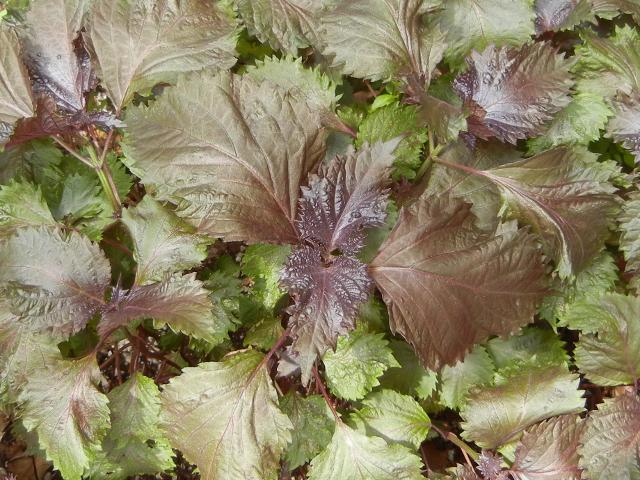Red Shiso (Perilla frutescens) in album food

Jul 4th, 2011, by Alex Zorach
This plant has many names; in Japan and often in the U.S. it is called shiso, this variety being called red shiso. The plant in general is also called Perilla, owing to the fact that it is in the Perilla genus. These herbs are also called Japanese basil, purple mint, or wild coleus, reflecting the fact that it is in the mint family and has a vaguely mint-like aroma, that it is used in Japanese cuisine and is somewhat basil-like, and that it does resemble Coleus in appearance.
This red shiso was growing in a pot in a small alley in center city Philadelphia. Shiso or perilla is a vigorous grower, and Perilla frutescens has naturalized in much of the U.S., including in the urban area of Philadelphia, where it is often found growing wild in cracks in the brick or sidewalk. I also took a photo of red shiso growing in cracks in the brick sidewalk near this plant.
This photo clearly shows the growth habit of this plant, which is typical of herbs and plants in the mint family: opposite leaves, and a square stem.
Shiso has a strange aroma; I remember the first time I encountered it, growing wild in Lancaster, PA: it looked like it was in the mint family, and knowing that this family often contained interesting plants, I smelled it, and I was intrigued by its aroma, but I was not immediately certain whether it was a food plant or something wild that was not necessarily edible. Its aroma is very complex and hints at many different familiar herbs. I find the strongest component of its aroma is licorice or anise, but unlike these plants, I find that its overall character is fresh, herbaceous, and suggestive of bitterness, less of a sweet smell. Sometimes shiso suggests basil or mint in aroma, but it also has a darker, almost skunky quality. Some people, especially those unfamiliar with non-western food, say it smells unpleasant but I find most people find it pleasing.
In Japan, shiso is used as a seasoning and sometimes as a vegetable, but it is also brewed as an herbal tea, and sometimes blended with sencha or other Japanese green teas.